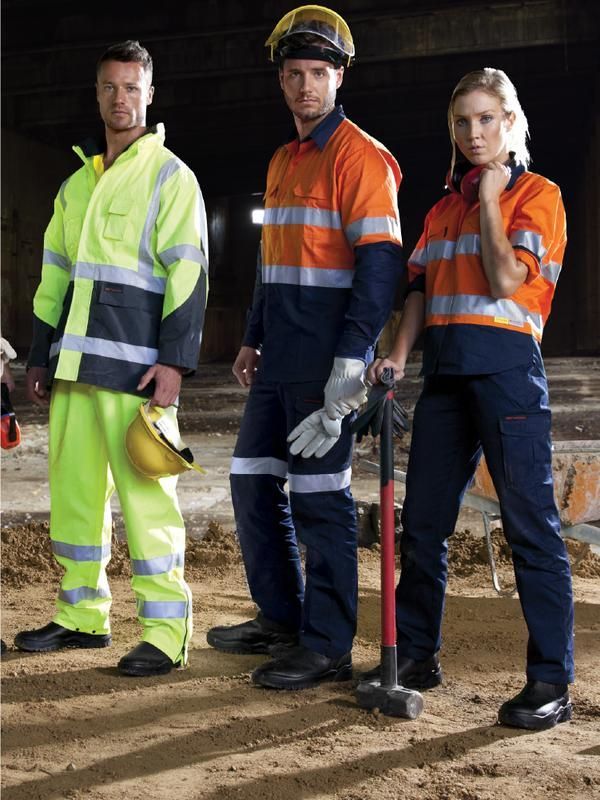
The Role of Uniforms in Promoting a Safety Culture on KSA Work Sites
In Saudi Arabia's rapidly expanding industrial sector, workplace safety has become a paramount concern as the Kingdom advances its Vision 2030 goals. Properly designed uniforms play a crucial role not just in compliance with safety regulations, but in fostering a culture where safety becomes ingrained in everyday operations.
The Evolution of Safety Standards in Saudi Arabia
Saudi Arabia has made significant strides in developing comprehensive occupational safety frameworks over the past decade. The Saudi Occupational Safety and Health Administration (OSHA), working alongside the Ministry of Labor and Social Development, has implemented increasingly stringent safety regulations for industrial workplaces—particularly in oil and gas, construction, and manufacturing sectors.
These regulations specifically address uniform requirements as part of a holistic approach to workplace safety, requiring employers to provide appropriate protective clothing that meets international safety standards while being adapted to Saudi Arabia's unique climate challenges.
Key Safety Elements in KSA Industrial Uniforms
1. High-Visibility Features
High-visibility elements are among the most critical safety features in industrial uniforms across Saudi workplaces:
- Reflective taping: Strategic placement on shoulders, arms, and legs enhances visibility in low-light conditions common in 24-hour operations
- Fluorescent materials: Particularly important in the oil and gas sector where dawn/dusk operations are common
- Color-coding systems: Many Saudi industrial sites implement color-coding to distinguish workers by role, authorization level, or department
- Contrast elements: Designed to maintain visibility in dusty conditions common to Saudi industrial environments
Case Study: SABIC's Safety Visibility Program
SABIC implemented a comprehensive uniform visibility program across its petrochemical facilities in Jubail Industrial City, resulting in a 37% reduction in near-miss incidents over a two-year period. The program featured standardized high-visibility elements integrated with specialized PPE requirements for different operational areas.
2. Identification and Authorization
Modern Saudi industrial uniforms incorporate sophisticated identification features that serve multiple safety functions:
- RFID-enabled badges: Integrated with uniforms to control access to hazardous areas
- Color-coded shoulder epaulettes: Indicating clearance levels for restricted zones
- QR codes: Allowing quick access to worker qualifications and certifications
- Embroidered role identifiers: Critical during emergency scenarios for identifying safety officers and first responders
3. Climate-Appropriate Protection
Saudi Arabia's extreme climate presents unique challenges for safety uniforms, requiring specialized materials that balance protection with comfort:
- Heat-stress mitigation: Advanced moisture-wicking fabrics that maintain protection while reducing heat stress in temperatures that regularly exceed 45°C
- Breathable FR materials: Flame-resistant fabrics specifically engineered for airflow while maintaining safety ratings
- UV protection: Integrated UPF 50+ protection for outdoor workers, particularly important on construction sites
- Sand and dust resistance: Sealed pockets and specialized collar designs to prevent particulate infiltration
Uniform Compliance with Saudi and International Standards
Industrial uniforms in Saudi Arabia must adhere to multiple layers of compliance requirements:
- SASO standards: The Saudi Standards, Metrology and Quality Organization maintains specific requirements for industrial protective clothing
- International certifications: Most industrial sites require EN ISO standards compliance, particularly EN ISO 20471 for high-visibility clothing
- Industry-specific requirements: Aramco, SABIC, and other major employers maintain proprietary standards that exceed general regulations
- Religious and cultural considerations: Uniforms must balance safety with appropriate cultural design elements
Beyond Compliance: Creating a Safety Culture
What distinguishes leading Saudi industrial organizations is their use of uniforms beyond mere regulatory compliance. Well-designed industrial uniforms contribute to safety culture in several ways:
- Psychological safety cues: The act of changing into safety-compliant workwear creates a psychological transition into a safety-conscious mindset
- Team identification: Unified safety apparel reinforces collective responsibility for workplace safety
- Safety recognition: Many Saudi employers incorporate recognition elements into uniforms to acknowledge safety achievements or specialized training
- Consistent visual reminders: Safety messaging and icons incorporated into uniform design provide constant reinforcement of key protocols
Implementation Challenges in the Saudi Context
Despite clear benefits, implementing effective safety uniform programs in Saudi Arabia presents several challenges that organizations must address:
- Multilingual workforces: Safety instructions and identifiers often need to accommodate Arabic, English, and other languages common in the diverse Saudi industrial workforce
- Climate extremes: Balancing protection with heat management requires specialized solutions not needed in other global regions
- Rapid regulatory evolution: The accelerating pace of safety standard updates requires flexible uniform programs
- Supply chain complexities: Ensuring consistent availability of compliant uniforms across multiple sites
Future Trends in Saudi Safety Uniforms
As Saudi Arabia continues its industrial expansion, several emerging trends are shaping the next generation of safety uniforms:
- Smart PPE integration: Wearable sensors monitoring environmental hazards, worker fatigue, and positioning
- Sustainable materials: Eco-friendly fabrics that maintain or enhance protection while supporting Saudi Green Initiative goals
- Enhanced customization: Modular uniform systems allowing for role-specific protection without complete uniform changes
- Advanced cooling technologies: Next-generation materials with active cooling properties to further mitigate heat stress
Conclusion
In Saudi Arabia's dynamic industrial landscape, safety uniforms have evolved far beyond basic protective clothing. Today's industrial uniforms represent a sophisticated intersection of regulatory compliance, cultural sensitivity, environmental adaptation, and psychological safety reinforcement.
Organizations that recognize uniforms as a strategic safety investment rather than simply a compliance requirement are demonstrating measurably better safety outcomes across the Kingdom's industrial sectors. As Saudi Arabia continues its ambitious industrial expansion, the role of well-designed safety uniforms in creating and maintaining a robust safety culture will only become more vital.
About the Author
Dr. Ahmed Al-Fahad is an occupational safety specialist with 15 years of experience in developing industrial safety protocols across the GCC region. He holds certifications from the Board of Certified Safety Professionals and serves as a consultant to several major industrial operators in Saudi Arabia.